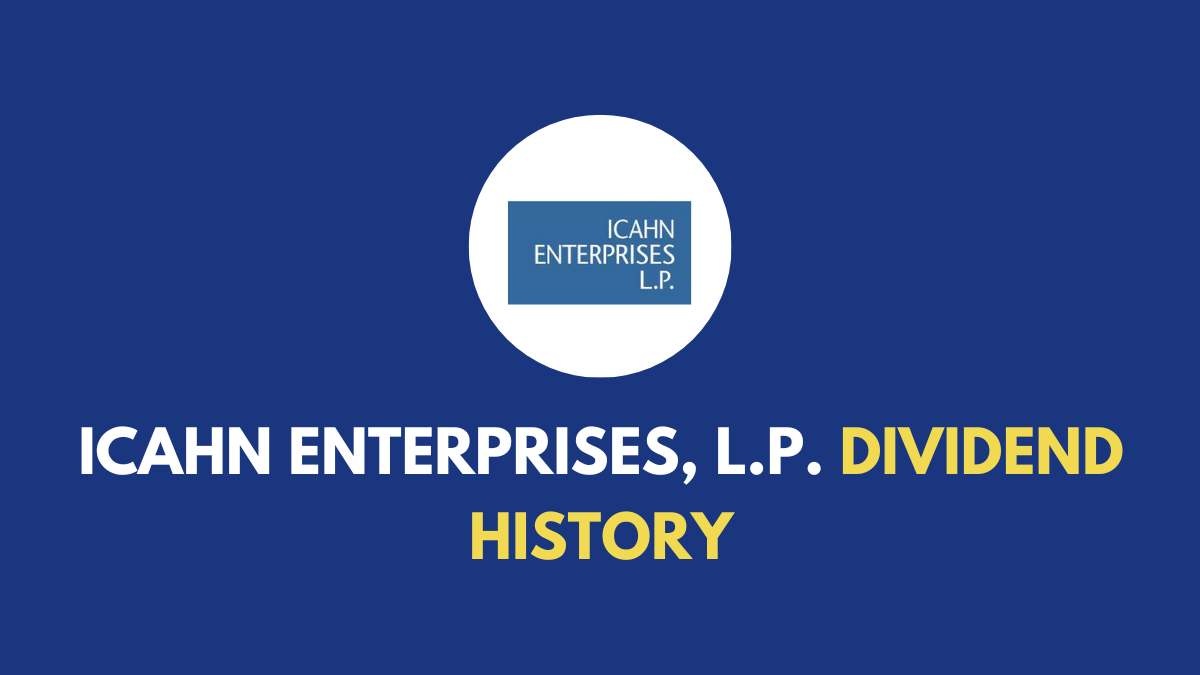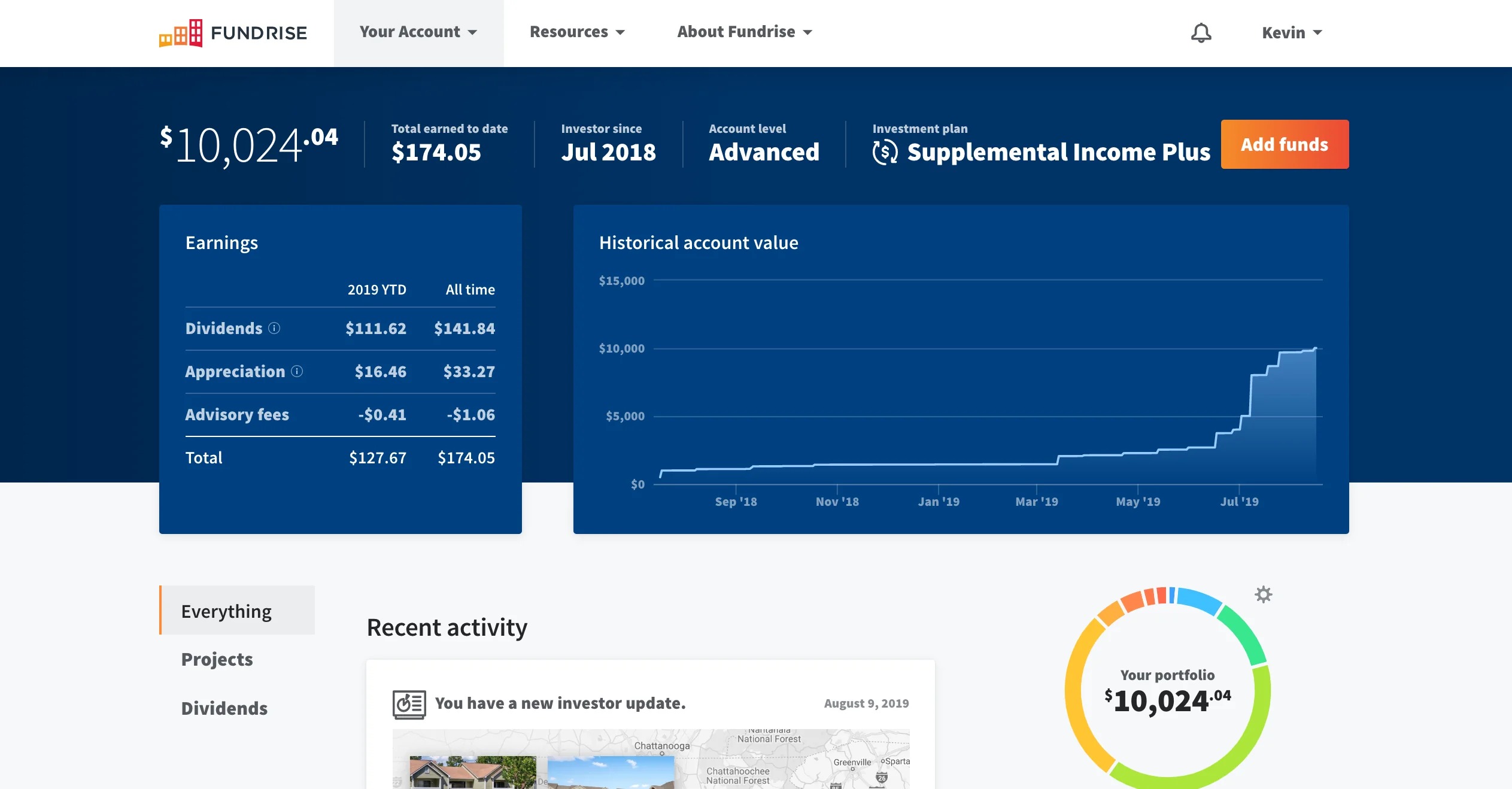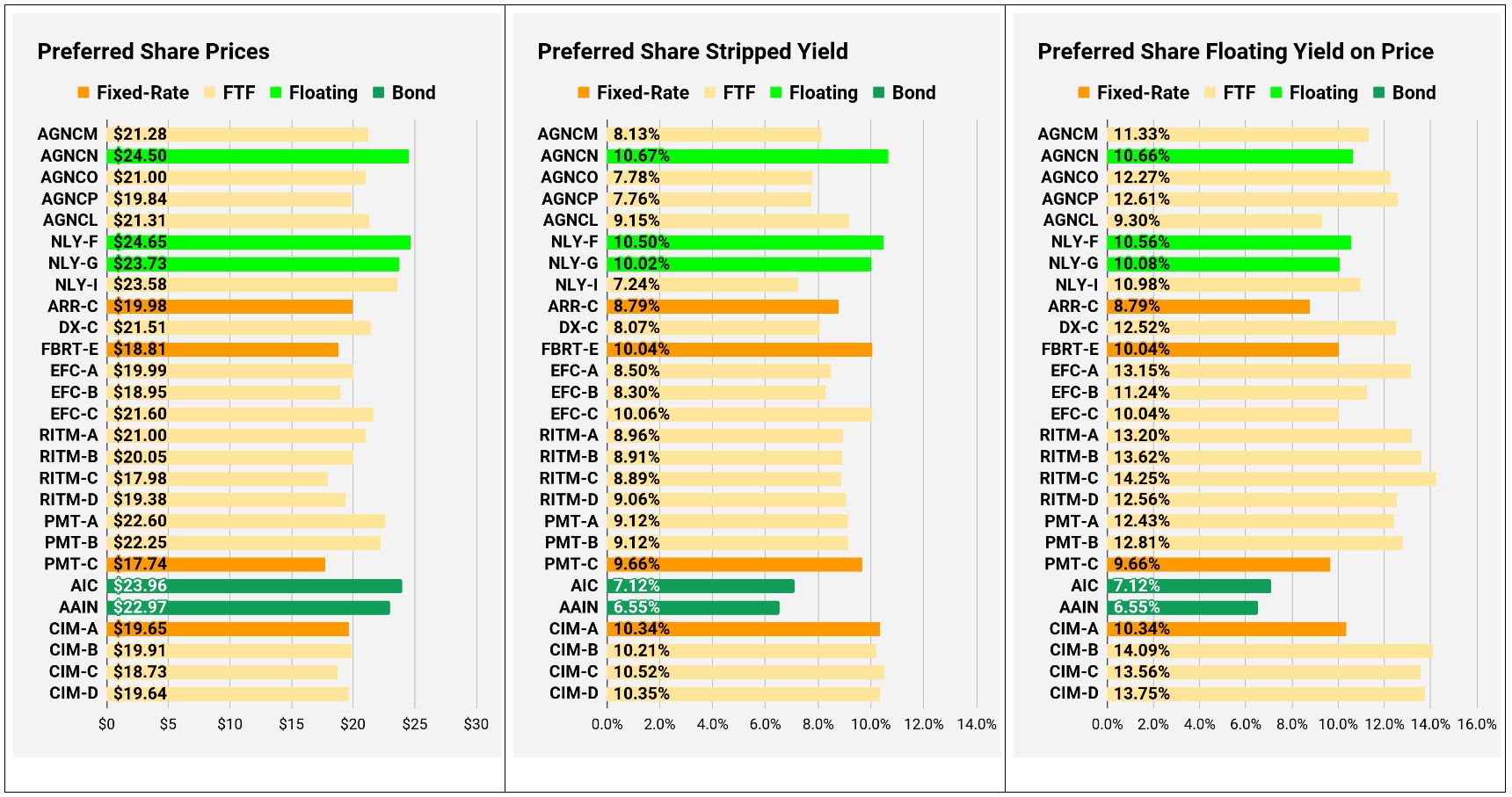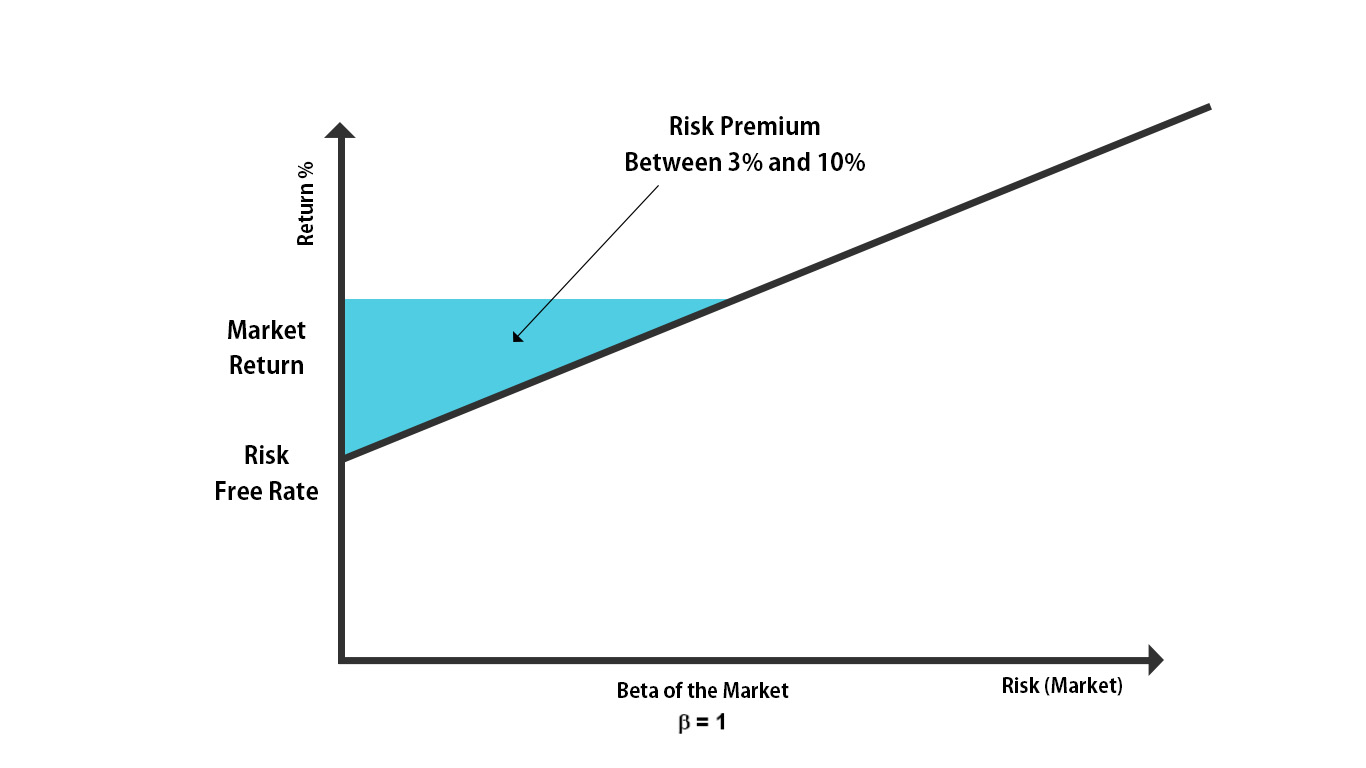

Finance
How Often Does IEP Pay Dividends?
Published: January 3, 2024
Learn how often IEP pays dividends and stay updated on the latest in finance. Get insights on dividend payments and maximize your investment returns.
(Many of the links in this article redirect to a specific reviewed product. Your purchase of these products through affiliate links helps to generate commission for LiveWell, at no extra cost. Learn more)
Table of Contents
Introduction
Welcome to our guide on understanding dividend payments by IEP (Institutional Educational Program). Dividends are a crucial part of investing, as they provide a steady income stream for shareholders. If you are considering investing in IEP or are already a shareholder, it’s important to understand how dividends work and how often they are paid.
IEP is a renowned financial institution that offers various investment products and services. They aim to help individuals and organizations maximize their financial growth and achieve their long-term goals. As with any investment, it is essential to understand the specifics of IEP’s dividend payment process to make informed decisions.
In this article, we will delve into the details of IEP’s dividends and explore the factors that influence dividend payments. We will also discuss the frequency at which IEP pays dividends to its shareholders. Understanding these aspects will help you plan your investment strategy and make the most of your investment in IEP.
Before we proceed, it’s important to note that this article provides general information and should not be considered as financial advice. It’s always recommended to consult with a financial advisor or conduct thorough research before making any investment decisions.
Now, let’s dive into the world of IEP and explore the fascinating realm of dividends!
Understanding IEP
Before we get into the specifics of dividend payments by IEP, let’s take a moment to understand what IEP is all about. IEP, or Institutional Educational Program, is a well-established financial institution that specializes in providing educational investment products and services. Their primary focus is to assist individuals and organizations in achieving their educational goals by offering a diverse range of investment options.
IEP understands the significance of education and aims to make it accessible to everyone. Through their investment programs, they provide financial resources to support educational initiatives, such as scholarships, grants, and educational infrastructure development. By investing in IEP, individuals not only have the opportunity to grow their wealth but also contribute to the enhancement of education globally.
Furthermore, IEP is known for its commitment to transparency, ethical practices, and customer satisfaction. They pride themselves on maintaining a high level of professionalism and providing personalized services tailored to each client’s unique needs. This commitment has earned them a stellar reputation within the financial industry.
IEP offers a wide range of investment products, including individual accounts, retirement accounts, and institutional accounts. These accounts enable investors to choose from various investment options, such as stocks, bonds, mutual funds, and exchange-traded funds (ETFs). Depending on their risk tolerance, financial goals, and time horizon, investors can customize their portfolio to align with their investment objectives.
With a team of experienced financial advisors, IEP assists investors in making informed investment decisions. They provide comprehensive research, market analysis, and expert guidance to help investors navigate the ever-changing financial landscape. Additionally, IEP offers educational resources and financial planning tools to empower investors and enhance their financial literacy.
Now that we have a better understanding of IEP and its commitment to education and investment services, let’s explore the concept of dividends and how they play a significant role in the investment journey.
Dividends and IEP
Dividends are payments made by companies to their shareholders as a distribution of profits. They serve as a reward for owning shares in the company and provide investors with a regular income stream. IEP, being a financial institution, follows a similar principle of distributing dividends to its shareholders.
IEP generates revenue through its various investment activities and the returns it earns on behalf of its clients. A portion of these earnings is allocated towards dividend payments. The amount distributed to shareholders as dividends is typically a percentage of the company’s profits, which is determined by factors such as financial performance, cash flow, and the company’s dividend policy.
Dividends from IEP can be received in various forms. These include cash dividends, where shareholders are paid in cash, and stock dividends, where shareholders receive additional shares of the company’s stock. The choice between cash or stock dividends depends on the company’s discretion and the shareholders’ preferences.
One important aspect of dividends to consider is the dividend yield. The dividend yield is a measure of the dividend income relative to the stock price. It is calculated by dividing the annual dividend per share by the stock price. A higher dividend yield indicates a higher return on investment in the form of dividends.
Dividends play a crucial role in the overall investment strategy of shareholders. They can provide a predictable stream of income, which can be especially beneficial for retirement planning or meeting specific financial goals. Additionally, for long-term investors, reinvesting dividends can generate compound returns over time, further enhancing investment growth.
It’s important to note that dividend payments are not guaranteed and can fluctuate over time. Companies, including IEP, may choose to adjust dividend distributions based on various factors, such as economic conditions, industry trends, and corporate profitability. Therefore, investors should carefully consider these factors and conduct thorough research before making investment decisions based on future dividend expectations.
Now that we understand the concept of dividends and their significance for shareholders, let’s explore the factors that may affect the frequency of dividend payments by IEP.
Factors Affecting Dividends
Several factors can influence the frequency and amount of dividend payments by IEP. Understanding these factors can provide insights into the stability and potential growth of dividends. Here are some key factors to consider:
- Financial Performance: The financial health and performance of IEP play a significant role in determining dividend payments. Companies with strong earnings and cash flow are more likely to distribute regular and higher dividends. Investors should closely monitor IEP’s financial statements, including revenue growth, profitability ratios, and cash flow trends, to assess the potential dividend stability.
- Dividend Policy: IEP’s dividend policy is a guiding framework that outlines how dividends are determined and distributed. The policy may specify a target payout ratio, which is the percentage of earnings allocated for dividends. Companies with a consistent and transparent dividend policy tend to provide more predictable dividend payments to shareholders.
- Industry and Market Conditions: The economic conditions and industry trends can impact IEP’s dividend payments. In times of economic downturn or industry instability, companies may choose to conserve cash and reduce or suspend dividend payments temporarily. Conversely, during periods of economic growth and robust market conditions, companies may increase dividend distributions.
- Regulatory and Legal Framework: Companies, including IEP, must comply with regulatory and legal requirements related to dividend payments. Changes in regulations, tax laws, or other legal obligations may affect the frequency or amount of dividends distributed. Investors should stay informed about any relevant regulatory changes that could impact dividend payments.
- Internal Investment Opportunities: IEP’s internal investment opportunities, such as new projects or acquisitions, may impact dividend payments. When companies have higher investment needs, they may choose to retain earnings rather than distribute them as dividends. Investors should consider how IEP balances its capital allocation between dividend payments and internal investments.
It’s essential for investors to assess these factors collectively and analyze their potential impact on dividend payments. By monitoring the financial performance, dividend policy, market conditions, regulatory landscape, and internal investments, investors can gain a better understanding of the stability and growth prospects of dividends from IEP.
Now that we have explored the factors influencing dividend payments, let’s delve into the frequency of dividend payments by IEP.
Frequency of IEP Dividend Payments
The frequency at which IEP pays dividends to its shareholders can vary depending on several factors, including the company’s dividend policy, financial performance, and market conditions. While IEP strives to provide consistent dividend payments, it’s important to note that dividend frequencies can change over time.
Typically, companies have a dividend schedule that outlines the specific dates when dividend payments are made. These dates may include the declaration date, ex-dividend date, record date, and payment date. The declaration date is when the company announces its intention to pay dividends, while the ex-dividend date is the date on or after which a shareholder must own the stock to be eligible to receive the dividend.
IEP’s dividend frequency can be influenced by its financial performance. If the company generates consistent profits and has a stable cash flow, it is more likely to maintain a regular dividend payment schedule. However, if there are fluctuations or uncertainties in the company’s earnings, dividend frequencies may be adjusted accordingly.
Market conditions also play a role in determining the frequency of dividend payments. During times of economic instability or market volatility, companies may exercise caution and reduce dividend frequencies to preserve cash and ensure financial stability. On the other hand, during periods of economic growth and favorable market conditions, companies may increase dividend frequencies to reward shareholders.
IEP’s dividend policy is another crucial factor in determining the frequency of dividend payments. The policy sets guidelines for when and how dividends are distributed. It may specify whether dividends are paid on a quarterly, semi-annual, or annual basis. Some companies may also choose to pay special dividends outside of their regular schedule, depending on exceptional financial circumstances or excess cash reserves.
It’s important for investors to review the company’s past dividend payment history to gain insights into the frequency of dividend payments. By analyzing the pattern of dividend distributions over time, investors can better understand how often IEP typically pays dividends and any potential changes that may have occurred.
It’s important to note that dividend frequencies are subject to change based on various factors. Investors should regularly monitor the company’s financial reports, dividend policy updates, and any announcements from IEP regarding changes to dividend frequencies.
Now that we have explored the factors affecting dividend payments and the frequency of dividend distributions by IEP, let’s wrap up our discussion.
Conclusion
Dividend payments are an integral part of investing, providing investors with a consistent income stream and potential growth opportunities. Understanding how dividends work and the factors that influence them is crucial for shareholders, especially those considering or already invested in IEP.
In this guide, we have explored the world of IEP, a renowned financial institution specializing in educational investment products and services. We have discussed the significance of dividends and how IEP distributes them to its shareholders. We have also examined the factors that affect dividend payments, including financial performance, dividend policies, market conditions, regulatory requirements, and internal investments.
While IEP strives to provide consistent dividend payments, it’s important to recognize that dividend frequencies can change over time. Factors such as financial performance and market conditions can impact the frequency and amount of dividends. It’s essential for investors to stay informed about these factors and regularly monitor IEP’s financial reports and dividend policies.
Investing in IEP can offer both financial growth and the opportunity to contribute to education globally. By understanding the nuances of dividend payments, investors can plan their investment strategies and make informed decisions aligned with their financial goals.
Remember, this guide is meant to provide general information and should not be considered as financial advice. It’s always recommended to consult with a financial advisor or conduct thorough research before making any investment decisions.
We hope this guide has equipped you with a comprehensive understanding of dividend payments by IEP and has empowered you to navigate the world of investments with confidence and knowledge.
Happy investing!














